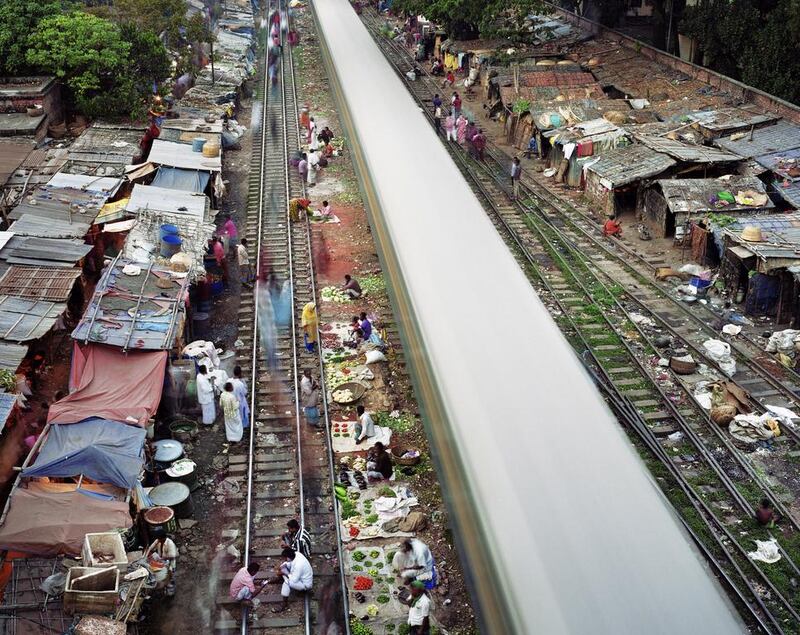The world’s population is increasing at an unprecedented rate. There are more than seven billion people on the planet, an increase of six billion in the last two centuries alone.
This has inevitably led to parts of the world becoming increasingly overcrowded, fuelling the rise of the megacity, defined as an urban area with a population of more than 10 million.
Dutch photographer Martin Roemers has spent eight years attempting to document this phenomenon. In doing so he has produced a series of images that reflect the concentration of activity in these urban centres.
As well as being collected in a coffee-table book, Metropolis, the photos have been exhibited around the world. He has won several awards for them, including the first prize at the World Press Photo awards for a series of images taken in Mumbai.
This month, his Metropolis show made its Middle Eastern debut at East Wing gallery at Dubai International Financial Centre. Roemers explains that in each photograph, he attempts to capture the energy of the city in a single image. He shoots each one with a long exposure from an elevated viewpoint, looking down and out. Any movement becomes a colourful blur, while those who are still catch the eye and tell a story.
“The key was how to capture all that you visualise, and all that you sense among the chaos and energy of many of these cities in one photograph,” says Roemers.
The idea for the series was born in 2007 during a visit to Mumbai. It began as a project about cities in India, but in 2009 he saw a United Nations report that stated more than half of the world’s population lives in a city.
“That was a turning point and I decided to expand the project to focus on the megacities,” he says. “At the time there were 22.”
Given that this number has risen to 29 in just seven years, and the global population continues to rise exponentially, this is a pertinent subject to explore.
“By 2050, it is predicted that almost three-quarters of people will live in a city – this is something that really fascinates me,” Roemers says.
The images in the exhibition are notable for their depiction of movement, interspersed with individual stories. There are red streaks from the lights of moving traffic on the roads of São Paulo; people on a busy crossing in Tokyo appear almost like ocean waves; and taxi drivers who have stopped to pray under a busy bridge in Lagos crystallise a moment’s stillness among the pulse of life in the city.
One of the most compelling images was taken overlooking a railway track in Dhaka, Bangladesh. The blur of a passing train becomes a diagonal strip dissecting the image – at first, the viewer hardly notices the train, instead seeing only the slums and their inhabitants on the side of the tracks. People are selling fruit, sitting in conversation, talking on phones and going about daily life, almost oblivious to the speeding train a few feet from them.
“There is so much to look at in this image,” says Roemers. “It works in two ways: from a distance and up close. Even I can discover new elements in an image like this – there are so many stories to be told.”
What is even more impressive about the photographs is that Roemers shoots on analogue film, not digitally. Most times, even he is not sure whether the image has worked until he gets home and sees it.
“That is the biggest challenge,” he says. “Because of the way I shoot, I don’t know if I have enough useful images before I come back. A couple of times, I had to go back to cities to reshoot for different reasons. When I was in Cairo, I was interrupted during my shoot and I had to leave. Every city had its own problems, and for the image to work, everything has to fall into place at the right time.”
Metropolis is not only full of impressive pieces of art, each image is also a lesson in history, geography, economics, politics and social studies. As such, during a visit to Dubai, Roemers gave a presentation and tour to students from Al Mawakeb School.
“Our aim for this exhibition is to get as many people as possible to see it,” says Elie Domit, founder of East Wing gallery. “The subject is so important and can be discussed on so many levels.”
• Metropolis runs until November 17 at East Wing gallery in Dubai
aseaman@thenational.ae





